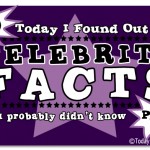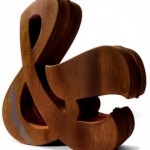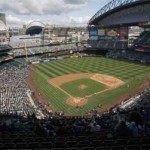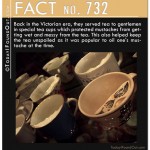Weekly Wrap Volume #45
 How Honey Bees Keep Their Hives Warm Given That They are Cold Blooded
How Honey Bees Keep Their Hives Warm Given That They are Cold Blooded
Up until only a few years ago, it was thought by many scientists that Honey bee hives were kept warm by pupae in the brood and that the bees would often congregate there to warm themselves up from the pupae. Recently, this was found not to be the case when a new Honey bee job was discovered, that of “heater bees.” Bees of almost all ages can perform this function by either vibrating their abdomens or they can also decouple their wings from their muscles, allowing them to vigorously use these muscles without actually moving their wings. This can heat their bodies up to about 111° Fahrenheit (44° C), which is about 16° F (9° C) hotter than their normal body temperature. Another new discovery that went with this was why queen bees leave… (more)
 Where the Dollar Sign Comes From
Where the Dollar Sign Comes From
his symbol first showed up in the 1770s, appearing in documents of English-Americans who had business dealings with Spanish-Americans. However, it wasn’t until the very early 1800s that it became popularized, around the same time as the first official U.S. dollars were being minted. Previous to this, the symbol had already been in use as an abbreviation for names of Spanish currency, namely as an abbreviation for the Spanish peso “p”.So how do you get from a “p” to the dollar sign, “$”? When writing financial documents referring to pesos, it was common to abbreviate the peso, for instance, “1 peso” to “1 p”. However, when pluralized, as in “1000 pesos”, it becomes… (more)
Making Out. Snogging. Canoodling. Kissing. An activity that is teetering on the edge of gross when viewed objectively, but one that most everyone enjoys in practice. But why do we kiss? What compels us to attach our lips to the lips of another human being? Or push the envelope even further and do the microbial tongue tango?Kissing has been a noteworthy activity throughout history. The earliest literate culture, the Sumer, described both standard and tongue kissing in their poetry. The couple thousand years old Indian Kama Sutra, the ancient guide to getting-it-on, devotes an entire chapter exclusively to various modes of creative lip-locking. Herodotus mentioned kissing among the Persians, who greeted those of equal status with a non-romantic kiss on the mouth, but those of lower rank with a… (more)
 Carrots Used to Be Purple Before the 17th Century
Carrots Used to Be Purple Before the 17th Century
The modern day orange carrot wasn’t cultivated until Dutch growers in the late 16th century took mutant strains of the purple carrot and gradually developed them into the sweet, plump, orange variety we have today. Before this, pretty much all carrots were purple with mutated versions occasionally popping up including yellow and white carrots. These were rarely cultivated and lacked the purple pigment anthocyanin. It is thought that the modern day orange carrot was developed by crossing the mutated yellow and white rooted carrots as well as varieties of wild carrots, which are quite distinct from cultivated… (more)
 Why Do Men’s and Women’s Clothes Have the Buttons on the Opposite Sides?
Why Do Men’s and Women’s Clothes Have the Buttons on the Opposite Sides?
As with so many things in history, we can’t know with 100% accuracy why men’s and women’s clothes button up the opposite way. (Even something relatively recent like who invented Buffalo Wings is up for debate despite being invented only about a half century ago.) But there are several theories floating around on the button front, one of which is particularly plausible.The most widely touted theory by far is that the practise of reversing buttons on men’s and women’s clothing stems back to the time of elaborate dress of gentlemen and ladies when upper-class women, particularly during the Victorian era, wore so many layers that it was necessary for them to be dressed by a servant or maid. As such, it became customary to make clothes for women that were slightly easier for other people to button up, specifically… (more)
Bonus Quick Facts:
- “Soccer” was once a popular name for Football in Britain in the sport’s earliest days. When the rules for the sport were first being defined, it was named “Association Football” to distinguish it from the other forms of football commonly played. Within a year of its inception, this got slurred down to “Assoccer,” after the common practice of adding “-er” to nicknames at the time in Britain. Very shortly after this, “Assoccer” became “Soccer,” which remained a semi-popular nickname for the sport in Britain until about a half century ago, along with just “Football.” The game initially spread throughout the world primarily known as “Football.” However, in countries where other forms of football already were dominate, the nickname “Soccer” was, and in some cases still is, the preferred name for this reason.
- Frenchman Just Fontaine holds the record for most World Cup goals in one tournament from 1958 when he scored an astonishing 13 goals. For reference, the top scorer in the history of the World Cup, Brazilian Ronaldo, scored a total of 15 times participating in four different World Cups.
- Most of the earliest forms of football were named thus, not because you kicked a ball with your foot, but because they were played on foot. Peasants played most of their sports on foot; aristocrats played many of theirs on horseback. Thus, games played on foot were called “football,” whether they had anything to do with kicking a ball or not. Indeed, many of the earliest forms of football involved carrying balls in an attempt to get across goal lines passed some opposing team or individual players.
- The earliest known record of a Football/Soccer-like sport was in 1004 B.C. in Japan. There are also many references to similar sports in 50 B.C. China, even being played between teams from China and Japan. The Romans played several types of football games, including some that resembled Football/Soccer, one of which was also included in the Roman Olympic Games. This particular version featured 27 men a side and was extremely rough, with it being common for most players to require medical attention after the game.
- During King Edward’s reign (1307-1327), he had laws passed against the playing of various football sports. Anyone caught playing any form of football would be imprisoned, “For as much as there is a great noise in the city caused by hustling over large balls, from which many evils may arise…” He wasn’t the only British monarch that hated football sports. Queen Elizabeth I “had football players jailed for a week, with follow-up church penance.” King Henry IV and Henry VIII also passed laws against football sports.
Other Interesting Stuff:
 10 Celebrity Facts You Probably Didn’t Know – Part 3
10 Celebrity Facts You Probably Didn’t Know – Part 3
The Wilhelm Scream and the Purple People Eater: Often called the “Star Wars Scream,” the Wilhelm scream can be heard in numerous movies as characters fly through the air. While there is no way to be 100% sure who owned the magical vocal chords of the person who made that momentous scream, the lead suspect has long been actor and singer/songwriter Sheb Wooley- the man most famous for the song “Purple People Eater.” Wooley had an uncredited part in the first film the scream was heard in, a 1951 film called Distant Drums, starring Gary Cooper as Captain Quincy Wyatt. At one point during the film, Captain Quincy is leading his soldiers through a swamp when one of them gets attacked and dragged under by an alligator, screaming in the process. During post-production recordings, Wooley recorded… (more)
 Where the Ampersand Symbol and Name Came From
Where the Ampersand Symbol and Name Came From
The symbol for “&” comes from combination of letters in the Latin for “and”, “et”. Specifically, in Old Roman cursive, it became common to combine e’s and t’s, which produced something like this: ![]() Over the next six centuries the ampersand gradually became more elaborate until we get the form of the symbol that is used today:
Over the next six centuries the ampersand gradually became more elaborate until we get the form of the symbol that is used today: ![]() The name for the symbol, “ampersand”, didn’t commonly come into use until the 19th century, from “and per se and”, meaning more or less: “and [the symbol] by itself is and”. Classically, when the English alphabet was spoken, “per se” commonly preceded any letter of the alphabet that could be used as a word by itself, such as “A” and “I”, as well “O”, which at one point could be used as a standalone word. Further, the ampersand symbol…(more)
The name for the symbol, “ampersand”, didn’t commonly come into use until the 19th century, from “and per se and”, meaning more or less: “and [the symbol] by itself is and”. Classically, when the English alphabet was spoken, “per se” commonly preceded any letter of the alphabet that could be used as a word by itself, such as “A” and “I”, as well “O”, which at one point could be used as a standalone word. Further, the ampersand symbol…(more)
 The Cause of Muscle Cramps When You Exercise
The Cause of Muscle Cramps When You Exercise
Cramps come in four categories: True cramps, Rest cramps, Tetanic cramps, and Dystonic cramps. The most common of these is the True cramp. While there are different causes of muscle cramps, like the involuntary contractions associated with seizures, we’ll focus on muscle cramping related to athletics, as this is the most common. Our bodies are composed of over 700 muscles that work together. Occasionally, involuntary contractions of one or more of these muscles will cause a cramp or spasm. A muscle cramp may involve a single muscle, part of a muscle or a number of muscles that work in synergy. Although most skeletal muscle cramps occur in foot and calf muscles, other muscles such as the thighs, arms, hands, and abdomen are also prone to spasms. No one knows for sure the exact mechanism that causes people to cramp during exercise… (more)
 How Baseball Groundskeepers Achieve Checkerboard Patterns in the Ballpark Grass
How Baseball Groundskeepers Achieve Checkerboard Patterns in the Ballpark Grass
Most of us have had the opportunity to stand in awe as our eyes perceive the beauty of a perfectly mowed grass in a baseball stadium. Stripes, checkerboard style, or even artistic expressions add flair to a baseball field. But how exactly do they get these patterns in the grass? Some say the grass is mowed at different heights or is colored to achieve the effect, but neither assumption is true. Rather, patterns in the grass have everything to do with how the grass is bent, which affects how the light hits it. When the light from the sun hits the grass, the color changes tone depending on how it is bent, which allows the creation of the checkerboard or designed effect. Specifically, strips of grass will appear lighter in color when the sunlight reflects off the full length of grass blades. Thus, the lighter grass is very likely bent away from you. The sections of grass that appear darker in color are a result of the sunlight reflecting off just the tops of the blades because the grass in these areas are bending toward… (more)
 The Top 55 Quick Facts of the Year
The Top 55 Quick Facts of the Year
It’s been about a year since we did our last “Top Quick Facts” post here on TodayIFoundOut, so here are 55 of our favorites from all the quick facts we’ve posted since last summer. (And if you’re interested, here’s last summer’s top quick fact list).
This Week’s Podcast Episodes:
- Podcast Episode #158: Why There are Holes in Doughnuts
- Podcast Episode #159: Why “Horsepower” is Used for Measuring Engine Power
- Podcast Episode #160: Brown Eggs vs. White Eggs
- Podcast Episode #161: How Chopsticks Became Popular Over Other Utensils in Certain Nations
- Podcast Episode #162: Measuring the Speed of Light in the 17th Century
- Podcast Episode #163: The Amazing Kipchoge Keino
- Podcast Episode #164: The Cotton Candy Machine and the Dentist Who Made It Possible
Top Posts This Week on TodayIFoundOut’s Facebook Page:
- The Inventor of the Selfie
- The Octopus That Walks on Land
- How Dropping a Priceless Piece of Art Revealed a $250 million “Priceless” Piece of Art
Quote of the Week:
- “If you tell people where to go, but not how to get there, you’ll be amazed at the results.” -George S. Patton
| Share the Knowledge! |
|







